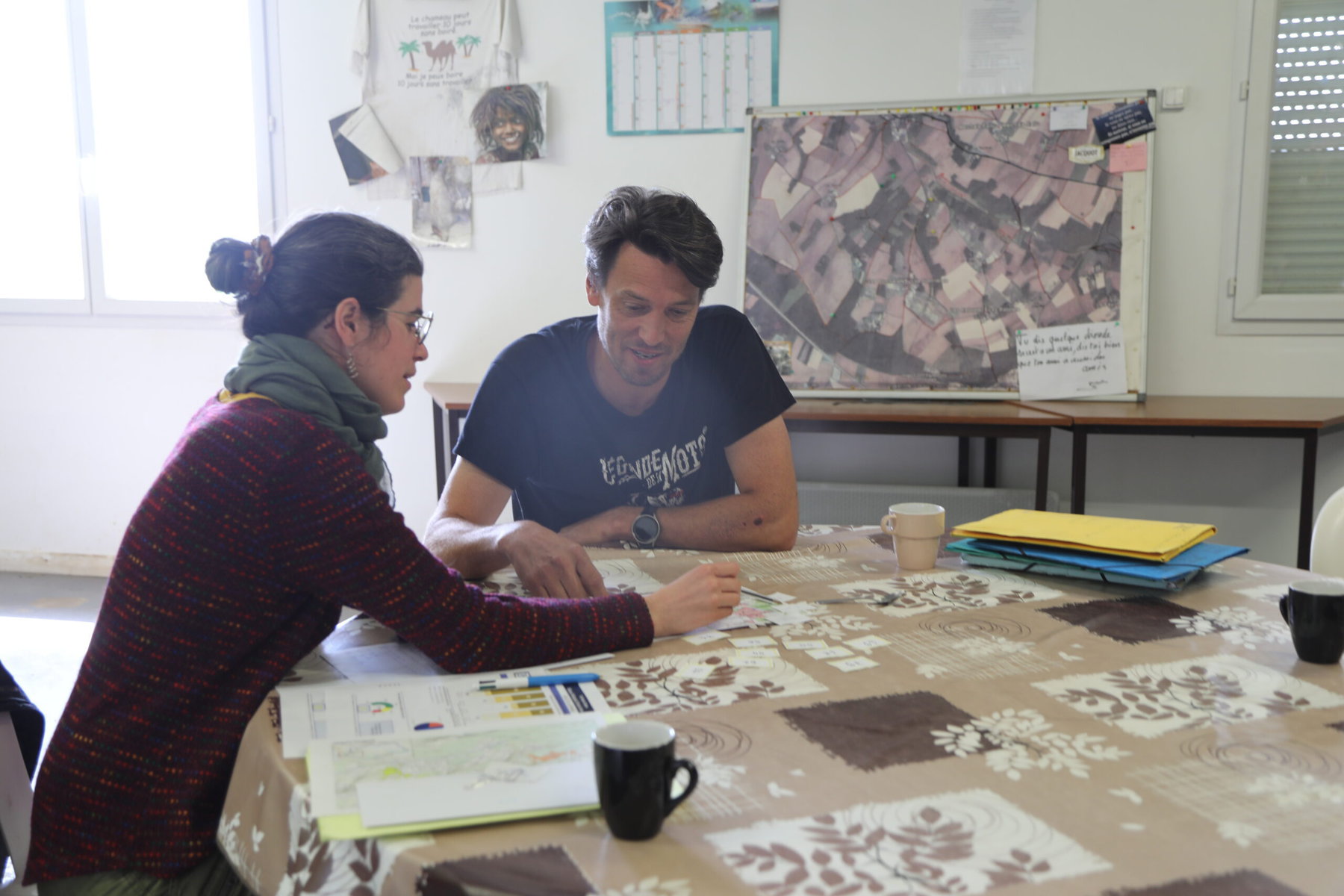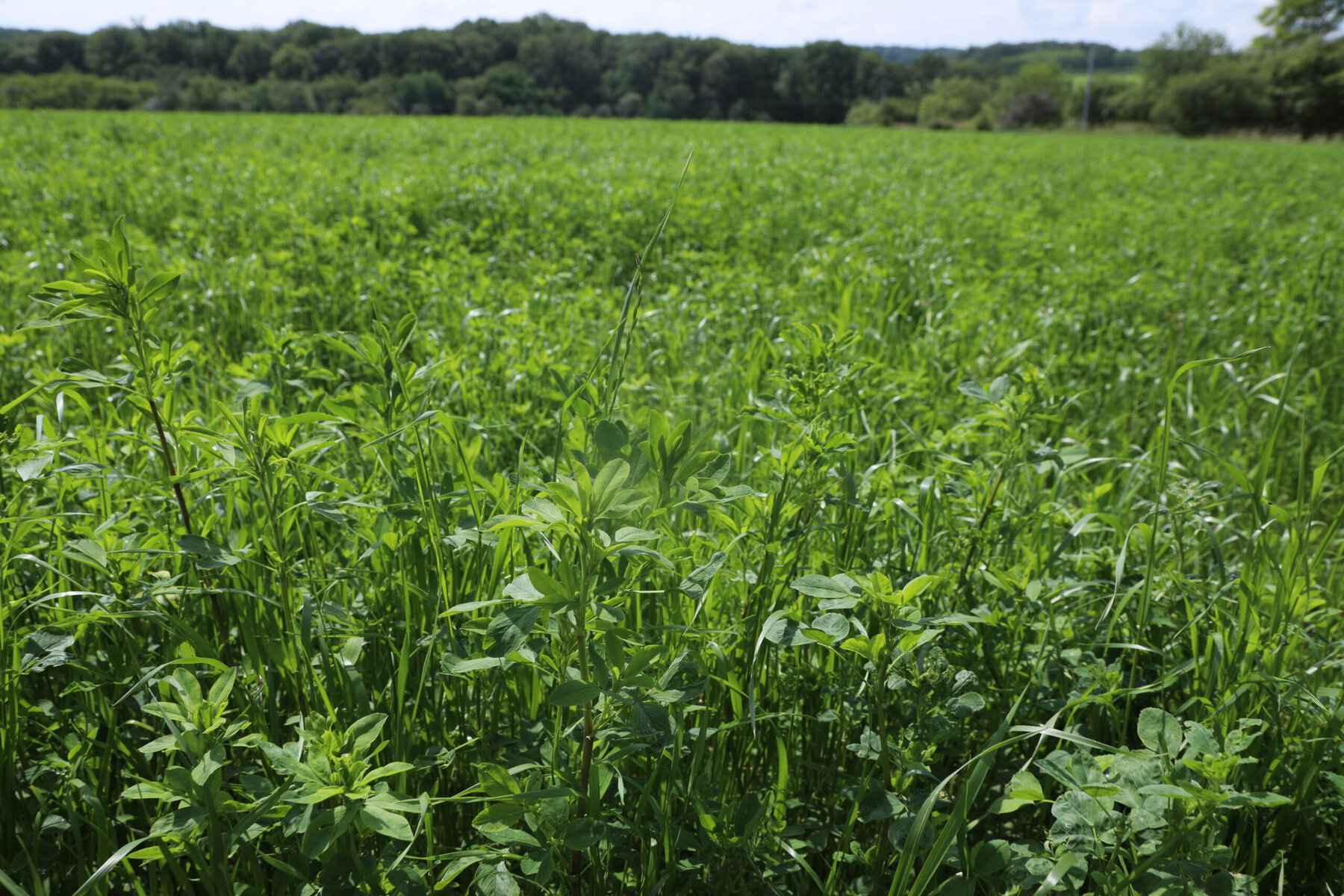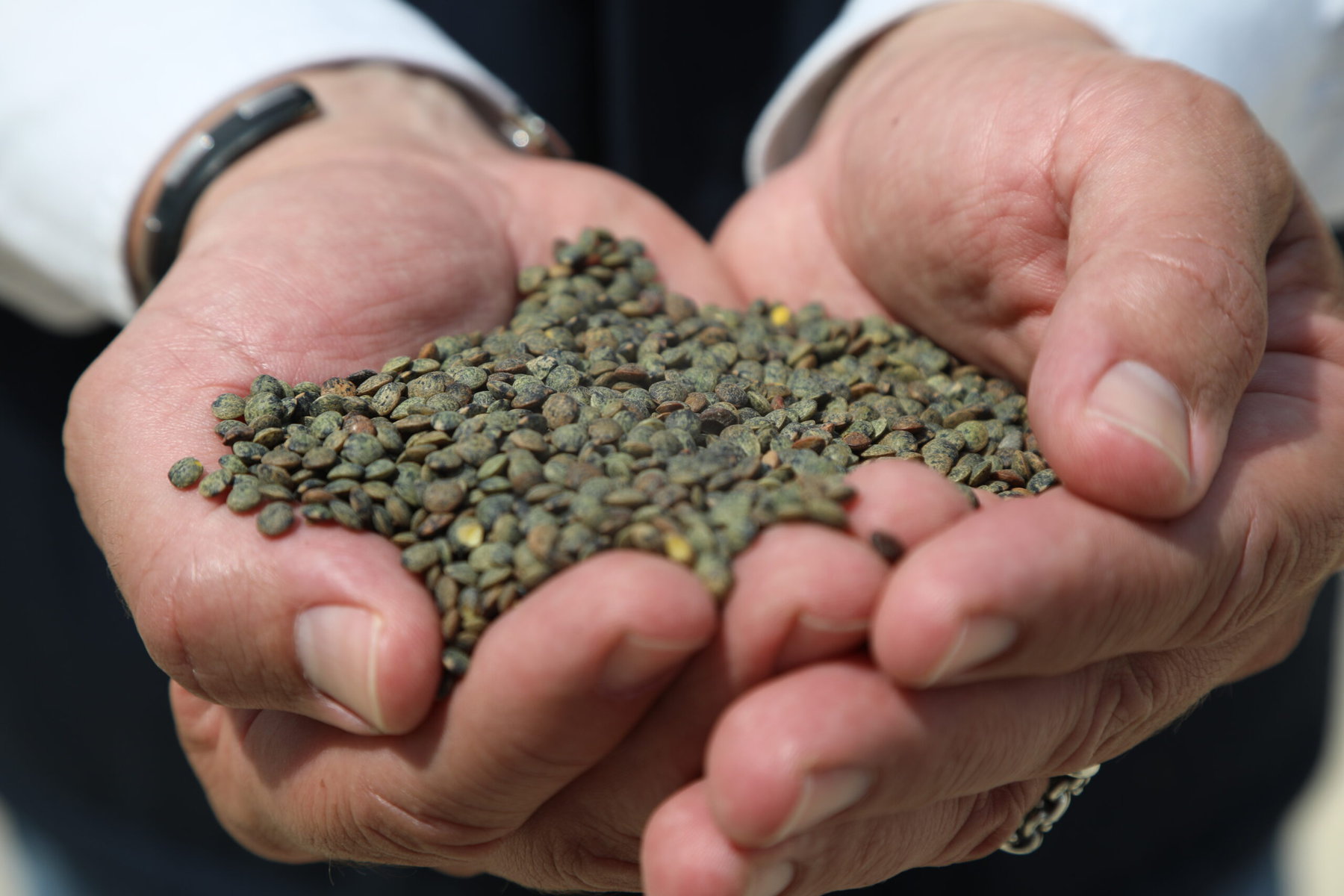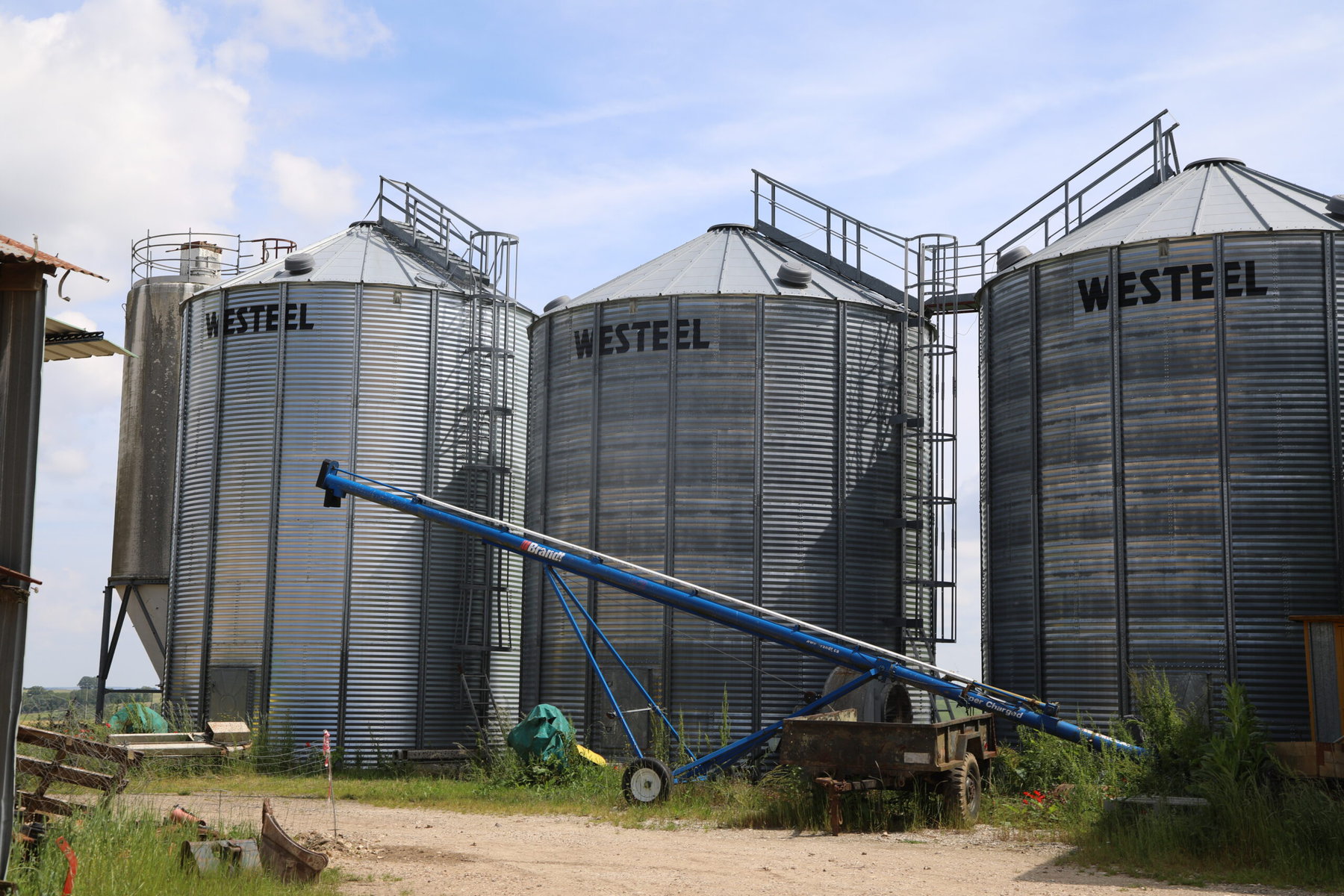The bright, late morning sun lights up the wooded hills and swooping valleys of the Pays d’Othe, a bucolic farming region about 100 miles southeast of Paris. In the foreground, a charming stone aqueduct cuts across the green fields in this snapshot of early summer.
“That’s the Aqueduct of the Vanne,” says Zoltan Kahn, gesturing over to what is a small portion of the 156-kilometer network built by Baron Haussman, the former prefect of Paris, in the late 19th century. “It carries water all the way to Paris.”
The Vanne, which supplies a fifth of Paris’s tap water, is fed by the water sources in these parts. Home to one of the largest forests in France, the region is rich in biodiversity and has been a key drinking water catchment area for centuries.
Yet with France’s growing intensification of farming in the 1960s — making it today the leading European agricultural producer, with about 18 percent of the continent’s output — that changed. To ramp up productivity, French farmers began to use more chemicals on their crops. Those fertilizers and pesticides in turn made it into major water supplies, in particular the watersheds that eventually would flow to Paris.
For many years, that was accepted as the norm. Costly water-processing plants were built to clean up the water in cities across the region and in the French capital so that it was safe enough to be used for drinking by large urban populations.
But with the rapid onset of climate change, which is tightening use of water reserves and triggering droughts in France and across the world, that approach is no longer seen as viable. Instead, the city now believes that water supplies must be protected at the source.
“We have to take a more sober approach to water use,” says Dan Lert, deputy mayor of Paris in charge of the ecological transition, climate plan, water and energy. “We cannot afford to be wasteful and polluting in the time of a climate crisis.”
!function(){“use strict”;window.addEventListener(“message”,(function(a){if(void 0!==a.data[“datawrapper-height”]){var e=document.querySelectorAll(“iframe”);for(var t in a.data[“datawrapper-height”])for(var r=0;r<e.length;r++)if(e[r].contentWindow===a.source){var i=a.data[“datawrapper-height”][t]+”px”;e[r].style.height=i}}}))}();
Since 2020, Eau de Paris, the city’s public water service, has been supporting farmers near its watersheds — spanning from Normandy in the north to Burgundy to the southeast — to reduce the use of pesticides and fertilizers on their crops. In other words, to go organic.
Zoltan Kahn is one of those farmers. The 48-year-old has 180 hectares of agricultural land in the Pays d’Othe, where he has been tilling the fields since 2006. In the past, Kahn, who was conscious of the environmental impact of chemicals, had a deal with a local poultry abattoir to use the remains of the birds to fertilize his land. But the smell it created proved off-putting. “Wind blew the stench to the villages,” he says.
So, when Kahn was approached by Eau de Paris with support to go fully organic, he jumped at the opportunity.
In exchange for switching to organic, he would receive a so-called “Payment for Environmental Services” for each hectare of his farmland cultivated every year as well as technical support and agricultural advice from a coordinator in the area.
As part of the €48 million ($51.8 million) project, Eau de Paris and the Seine-Normandy Water Agency, a public institution fighting water pollution in the region, are supporting 115 farmers based in watersheds that supply the city to either reduce their use of chemicals or go fully organic (as 58 percent of the farmers have).
Already €32 million of that funding has been granted, according to Anne-Sophie Leclere, deputy director general of Eau de Paris, for more than 17,000 hectares of farmland across Greater Paris, Normandy and Burgundy. The aim is to secure further funding and raise the amount of farmland involved in the project to 40,000 hectares.
“It’s better for us to have cleaner, purer watersheds,” says Leclere. “This will save Paris from having to pay much more to process the water once it arrives in the city.”
Policies to preserve watersheds like that of Paris could reap a wide range of benefits, from protecting biodiversity to sequestering carbon and providing millions of rural landowners with new sources of income, according to Giulio Boccaletti, scientific director of the Euro-Mediterranean Center on Climate Change (EMCC) and author of the book Water: A Biography.
!function(){“use strict”;window.addEventListener(“message”,(function(a){if(void 0!==a.data[“datawrapper-height”]){var e=document.querySelectorAll(“iframe”);for(var t in a.data[“datawrapper-height”])for(var r=0;r<e.length;r++)if(e[r].contentWindow===a.source){var i=a.data[“datawrapper-height”][t]+”px”;e[r].style.height=i}}}))}();
“We protect watersheds for all sorts of reasons,” says Boccaletti, who estimates that 143 gigatonnes of carbon are stored within urban source watersheds. “It doesn’t just deliver cleaner water.”
They are of enormous importance. Urban source watersheds supply water for drinking and domestic use to an estimated 1.7 billion people living in cities around the world, according to research by Boccaletti, and that number is growing rapidly. But he also found that they are under threat: deforestation, poor agricultural practices and other land uses have caused degradation in 40 percent of the world’s urban watersheds.
Crushed by negative news?
Sign up for the Reasons to be Cheerful newsletter.
“To grow sustainably, cities must play an active role in protecting these watersheds,” says Boccaletti.
While farmers in France do already receive a subsidy of around €350 ($378 US) per hectare of organic farmland each year for five years via the European Commission’s Common Agricultural Policy, the Paris payment offers a similar amount — higher for those who go fully organic — for up to a further seven years, providing longer-term stability, as well as crucial on-the-ground support from coordinators.

“It’s been an enormous help,” says Ada Kubik, who works as a coordinator in the Pays d’Othe for the nonprofit Bio-Bourgogne Franche-Comté (which is funded in part by Eau de Paris). “Many farmers wouldn’t have signed up without it.”
According to Bio-Bourgogne Franche-Comté’s research, while about 12 percent of all farms in France are organic, the proportion in the Pays d’Othe is more than double that — at 28 percent, underlining the difference that the extra support has made. Some organic farmers in the Pays d’Othe have benefited from state support since 2008.
“You can’t go organic in one year,” says Lert. “It takes time and farmers must be able to make a living.”
Kubik and other coordinators like her provide technical support for farmers, as well as sharing the latest scientific studies related to organic farming with them, and organizing group field trips for farmers to learn from each other’s experiences.
In practice, going organic means that Kahn’s fields are under a system of rotating agriculture, in order to maximize the fertility of the terrain. One year, he might grow spelt or wheat in a field, the next it could be lentils, corn or chickpeas, before he switches to flax or buckwheat, sunflowers, or even, recently, chia. Then, alfalfa, known for its ability to improve soil quality, is cultivated for two years. The entire process could take six or seven years, but in theory the soil won’t ever degrade as it would under monocropping.
Yet achieving that progress has been far from easy pickings. While Paris’ efforts focused on farmers and their production, not enough attention was given to building up the infrastructure needed to sell and distribute the resulting organic produce, according to Kahn.
“At the beginning, profitability was very difficult,” he says. “We could grow our food but not sell it. We were in the shit.”
That’s begun to change.

In order to pool together producer power, in 2018 Kahn set up an association with several other local organic farmers known as Terres du Pays d’Othe, or Lands of Pays d’Othe, who together have 1,500 hectares of farmland.
And under Paris’ Sustainable Food Plan, of the 30 million meals served each year in the 1,300 municipal restaurants, such as school canteens, 75 percent must be organic and 50 percent produced less than 250 kilometers (155 miles) away, by 2027.
Now Kahn and other association members have contracts to sell significant amounts of their produce directly to these eateries, through the support of AgriParis Seine, an initiative launched in 2023 to facilitate the links between farmers and municipal restaurants.
“The lentils grown there end up on the plates of Parisian school kids,” says Lert.
In September 2023, the association opened up a warehouse with 1,200 metric tons of storage capacity — with 40 percent of the costs covered by the Seine-Normandy Water Agency, which helps farmers to buy machinery and infrastructure for the transition to organic.

The warehouse is used to process crops such as lentils and chickpeas, to produce and bottle oils and to even fabricate pasta, as part of an attempt to increase demand and profit margins. Early signs are that it’s paying off: Kahn says that sales are up 240 percent so far in 2024 compared to the same period last year.
Nonetheless, Kahn believes the system should be further in favor of those who make the decision to go organic. Without the guarantee provided by chemical fertilizers, crops are more likely to fail, especially technically challenging ones like chickpeas. Whatever isn’t sold to municipalities is also at the whims of volatile market prices for organic food.
“We are taking a risk,” he says. “So we must be protected.”
For Kahn, that’s not necessarily through direct payment, but perhaps through a better insurance system designed for organic farmers.
However, in the European Union, any change to farming protocols is hamstrung by the Common Agricultural Policy, infamous for its strict regulations. It took nearly two years for Eau de Paris to get the green light for its organic farming project, for example.
“It was an administrative challenge,” says Leclere.
In fact, any urban watershed conservation effort is likely to face lengthy, complicated negotiations because rural land often has a substantial amount of private owners. “It can be cumbersome to organize,” says Boccaletti. “There could be hundreds and thousands of owners to deal with.”

But if you manage to do that, he says, water is much cheaper. New York City, for example, was mulling its options for water provision in the 1990s and instead of constructing a filtration facility that would have cost $8 to $10 billion, and $1 million each day to operate, it chose to clean up the NYC Watershed, which provides 1.2 billion gallons of high quality drinking water to nearly one-half the population of New York State every day, for the not insignificant but much lower outlay of $1.5 billion.
An analysis of 534 cities around the world by Boccaletti in 2015 found that globally $890 million could be saved on water treatment alone every year if authorities applied conservation strategies to watersheds. “Conservation is the cheapest way to keep the water as clean as possible before it enters urban water supplies,” he says.
The impact of the Paris project on water quality is yet to be quantified, however, with an evaluation currently being carried out at several sites following two years of the organic farms. And authorities stress that organic farming can only play a part in wider water efforts, and that cases of extreme pollution can’t be solved with conservation alone.
“The improvement takes a long time,” says Lert. “Some pesticides can remain for decades.”
Lert also is campaigning for the French government to ban the use of pesticides and fertilizers in all of the country’s watersheds. Yet he warns of limited political action to date. At the same time, President Emmanuel Macron has come under criticism for failing to ban the controversial herbicide glyphosate after pledging to do so.
In the broader picture, Boccaletti adds that building trust with farming communities, offering sufficient financial support and verifying that the efforts are having an impact on water quality are important factors for any urban watershed conservation.
“The success depends on how it is implemented,” he says. “But there is no question that regenerative agriculture is an important part in the future of protecting water.”
The post To Keep Clean Drinking Water Flowing to Paris, Farmers Are Going Organic appeared first on Reasons to be Cheerful.


